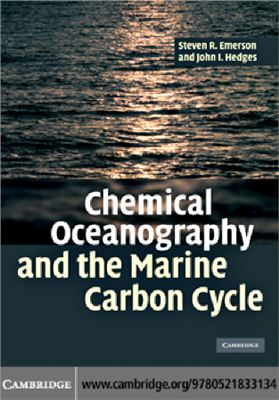Cambridge University Press. 2008. 475 p.
The principles of chemical oceanography provide insight into the processes regulating the marine carbon cycle. The text offers a background in chemical oceanography and a description of how chemical elements in seawater and ocean sediments are used as tracers of physical, biological, chemical and geological processes in the ocean. The first seven chapters present basic topics of thermodynamics, isotope systematics and carbonate chemistry, and explain the influence of life on ocean chemistry and how it has evolved in the recent (glacial-interglacial) past.
Contents.
Introduction to chemical oceanography.
Oceanography background: dissolved chemicals, circulation and biology in the sea.
Geochemical mass balance: dissolved chemical inflow and outflow from the ocean.
Thermodynamics background.
Carbonate Chemistry.
Stable and radioactive isotopes.
Life processes in the ocean.
Paleoceanography and paleoclimatology.
Marine organic geochemistry.
Molecular diffusion and reaction rates.
Gases and air–water exchange.
The global carbon cycle: interactions between the atmosphere and ocean.
Chemical reactions in marine sediments.
The principles of chemical oceanography provide insight into the processes regulating the marine carbon cycle. The text offers a background in chemical oceanography and a description of how chemical elements in seawater and ocean sediments are used as tracers of physical, biological, chemical and geological processes in the ocean. The first seven chapters present basic topics of thermodynamics, isotope systematics and carbonate chemistry, and explain the influence of life on ocean chemistry and how it has evolved in the recent (glacial-interglacial) past.
Contents.
Introduction to chemical oceanography.
Oceanography background: dissolved chemicals, circulation and biology in the sea.
Geochemical mass balance: dissolved chemical inflow and outflow from the ocean.
Thermodynamics background.
Carbonate Chemistry.
Stable and radioactive isotopes.
Life processes in the ocean.
Paleoceanography and paleoclimatology.
Marine organic geochemistry.
Molecular diffusion and reaction rates.
Gases and air–water exchange.
The global carbon cycle: interactions between the atmosphere and ocean.
Chemical reactions in marine sediments.

